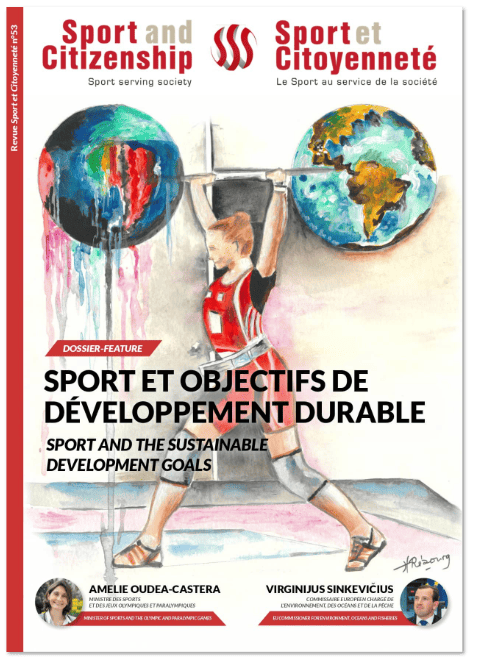Physical literacy: a concept applied in Europe
In 2018, nearly one in two Europeans (46%) said they never did a physical activity or sport, a trend on the rise since 2009, and growing further since the Covid crisis. This situation raises questions about the European models for encouraging people to do sport and invites discussions on the changes necessary, such as the emerging concept of physical literacy.

Eva jacomet, Head of mission, Sport and Citizenship Think Tank
The overall reduction in activity levels in Europe is perturbing since it has damaging repercussions on public health. Many countries have grasped this issue and have prioritised the promotion of physical activity and the combat against the sedentary lifestyle in their state policies. In Ireland, as in Lithuania, Denmark and Slovakia, this is by means of adopting and implementing the emerging notion of physical literacy, and they share a common definition of this (see the article by Richard Way and Drew Mitchell on the subject.)
On the European scale, Ireland can be seen as a pioneer in physical literacy and has formalised it as a priority axis in its sporting policies. For several years, the government agency Sport Ireland has adopted the LISPA (Lifelong Involvement in Sport and Physical Activity) framework. This framework establishes teaching physical literacy from the earliest age, in three stages. The first, for very young children (1 to 8) concerns acquiring basic skills in movement and motricity. That is followed by a second stage acquiring specific skills (8 to 12) which will enable all children to learn to play and practise different sports and physical activities. These two stages lead to the third, for teenagers and adults. It is divided into two strands: long-term participation in a sport or physical activity based on leisure and an active lifestyle, or practising a sporting discipline competitively or at the top level.
Even if the idea is not really new, physical literacy reminds us of the importance of developing basic skills at a very young age. If a child gains the habit of doing a regular physical activity at a young age, it will be easier for them to continue this behaviour throughout their life.
“Childhood and basic skills”
In Slovakia, the National centre for Sports and the Ministry for Education, Science, Research and Sports have recently initiated discussions on this subject. Here, too, the acquisition of basic skills in movement and motricity at the earliest age is seen as a prerequisite for a healthy and active life in the long term. Similar reflections are taking place in Lithuania and Denmark, where measures encouraging very young children to do sport or a physical activity are being taken. In Denmark, the Sports Confederation (DIF) has set up an “active childminding/crèche” qualification for structures encouraging motricity and physical activity for the youngest children.
Physical literacy was highlighted several times at “Sport” events during the French Presidency of the European Union, and the concept should be developed in Europe since it seems very useful for designing schemes aimed at reinforcing physical activity and preventing sedentary behaviour.
Information from the benchmark carried out by Sport and Citizenship on the “Sport” priorities of European Union Member States (2022)
Find this article and more in our special magazine “Sport and ODD”







 INSCRIPTION
INSCRIPTION
 CONTACT
CONTACT FACEBOOK
FACEBOOK